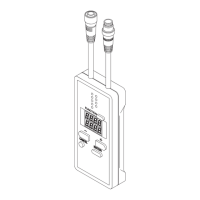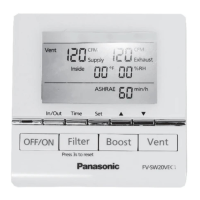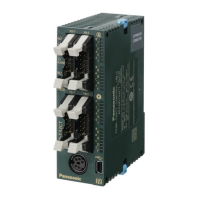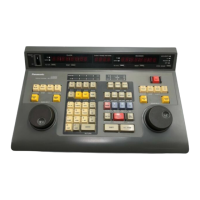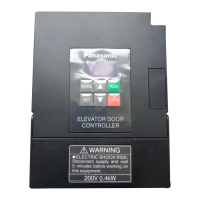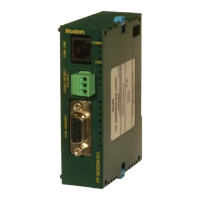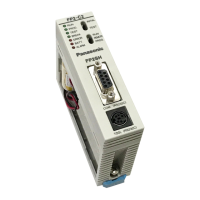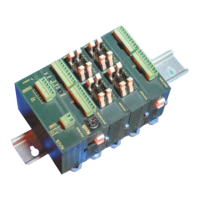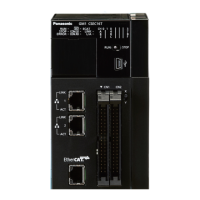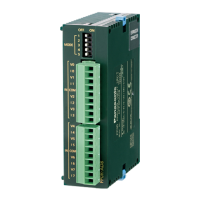13
S-LINK input unit : The change in input condition of Address
7 can be read from the data of
Bit 7 of location 00H in the reception I/O data area.
If Bit 7 is “1,” the input is ON, and if it is “0,” the input is OFF.
S-LINK output unit : The output of Address 120 can be changed by input of data in Bit 0 of lo-
cation 07H in the transmission I/O data area. “1” is written in Bit 0 for the
output to be ON, and “0” is written for the output to be OFF.
Note: Even if the S-LINK system I/O assignment is not continuous, the I/O data area of SL-GU1-D is as-
signed continuously.
Example: In case of I/O channels: 128 Nos.
Address 0 to 31: input setting
Address 32 to 63: output setting
Address 64 to 95: input setting
Address 96 to 127: output setting
and with status data
Bit 0 to 7
Reception I/O data
area
00 to 03H S-LINK unit address 0 to 31 input data
04 to 07H S-LINK unit address 64 to 95 input data
08H
09H Status data (error address)
Transmission I/O
data area
00 to 03H S-LINK unit address 32 to 63 output data
04 to 07H S-LINK unit address 96 to 127 output data
Bit Description
0 Error 1 (Short-circuit between D and G)
1 Not used = 0
2 Error 3 (Abnormal voltage level between D and G)
3 Error 4 (Cable disconnection or unit faulty)
4 Multiple device error (Several units faulty on occurrence of Error 4)
5 to 7 Not used = 0
Bit Normal operation On Error 4 occurrence
0 to 7 No. of units connected to the S-LINK system Error address
Status data
Error 1 to 4 (Bit 0 to 3) indicate the S-LINK system error by their respective bits.
(“1” = occurrence of error)
Multiple device error (Bit 4) becomes “1” when several S-LINK units are faulty on occur-
rence of Error 4.
2) Error address area
During normal operation, it indicates the number of S-LINK units connected to the
S-LINK system.
S-LINK unit at which the error
occurs.

